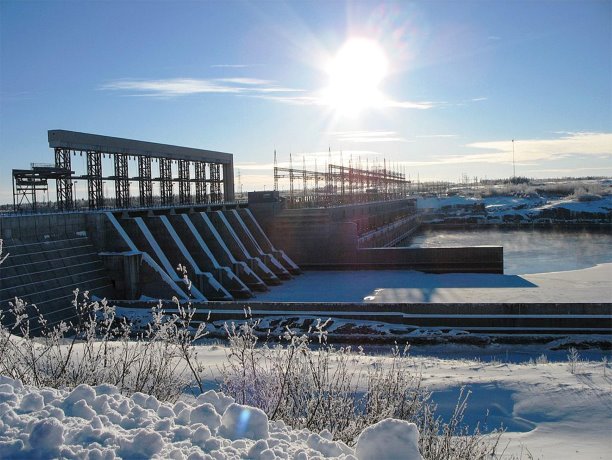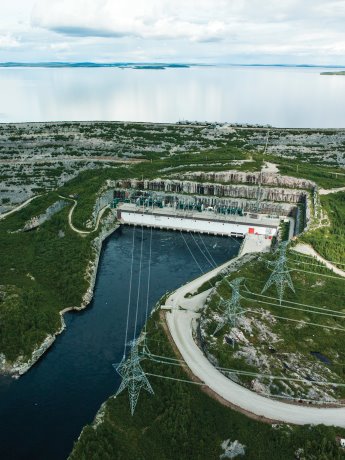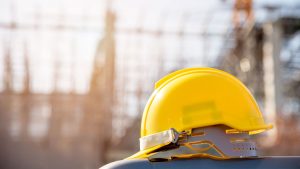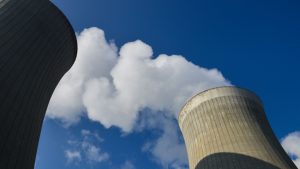No account of the construction of Robert Bourassa’s “Project of the Century,” the sprawling multi-billion-dollar hydro-electric power project built with 11 generation plants in three phases on the eastern watershed of James Bay, is possible without a chronicle of the parallel struggles and evolution of the Cree and Inuit people whose communities and culture were forever changed by the process.
The project announced by new Quebec Premier Bourassa in April 1971 contemplated works of unprecedented breadth and endeavour. Bourassa said 100,000 jobs would be created by the project and Quebec would emerge with a new identity, not as an independent nation as was being advocated by some at the time but as an energy powerhouse.
But hard as it may seem today, when First Nations are required to be consulted as a constitutional mandate whenever projects will touch their communities, the project owners originally ignored the consequences the project would have on the 5,000 to 6,000 Cree and 3,500 Inuit whose fishing, hunting and trapping traditions would be disrupted. At the time, the Crees were not organized in political units; they lived on the land for 10 months of the year with two to three families spread out across each of 300 hunting territories and no protocol for consultation. The first permanent houses had been built in Mistissini just eight years earlier. The Cree first heard about Bourassa’s plan in day-old newspapers or over the radio.
Two months after Bourassa’s announcement, representatives from the six unaligned Cree communities would gather and embark on a path that would eventually create a new era of indigenous consultation, leading to recognition of Cree nationhood and spawning the modern environmental approvals regime, and also force Hydro-Quebec to sit at the negotiating table, compromise and scale back their plans.
The James Bay hydroelectric project represents a series of huge builds, each one of which can be considered a mega-project on its own. Accounts from such sources at the Cree and Hydro-Quebec archives indicate Bourassa, then a backbencher in the Quebec Liberal party, met with Hydro-Quebec president Roland Giroux in December 1969 and emerged ready to champion the James Bay plan.
Bourassa was chosen party leader in January 1970 and won a general election three months later. The James Bay project was announced exactly one year after the April 29 win. The Societe d’energie de la Baie James (SEBJ) under the leadership of electrical engineer Robert A. Boyd was created to manage the built and hand the plants over to Hydro-Quebec when complete.
Eric Hamel
Hydro-Quebec James Bay visitors coordinator
There were early delays. Following a long court case to define Cree rights that led to an injunction — quickly overturned — in 1973, the Cree, the Inuit and the project owners signed the historic James Bay and Northern Quebec Agreement (JBNQA) in 1975, clearing the way for unimpeded work on James Bay phase one.
Longtime Hydro-Quebec James Bay visitors coordinator Eric Hamel is well placed to offer insights into the build – his father worked first at the Churchill Falls project in Labrador and then moved his family to Radisson, the new company town built for construction workers on James Bay.
Access to the isolated northern territory was the first priority for project managers, Hamel explained. Ice roads were initially constructed north of the existing Matagami terminal as heavy construction materials and machinery had to be transported to Waskaganish, followed soon by the all-season James Bay Road.
"What they did was reinforce this road to support the weight of 500 tonnes, the transformers are the heaviest part, so it was built to support the heaviest material," said Hamel. The engineering firm Desjardins, Sauriol and Associates undertook the job.
"The James Bay Road was 450 miles in 450 days and it cost $450 million, that is easy to remember," he said.
The road was completed in 1974 and paved by 1975. As for selecting a precise location for the first power plants, Francois Rousseau, an engineer with the firm Rousseau Sauve Warren, is credited with identifying a northern site on James Bay which has among its advantages a thick granite foundation.
"Rousseau was the ideator (visionary)," Hamel said.
"Many people thought it would be in the south of James Bay, but Mr. Rousseau, when he explored, he saw that it was a big advantage that we are on granite rock, and we have till very close to build the dams, so we have materials very close to the construction site, so for hydroelectric potential, this was the best for the province."
The granite base was perfect for the creation of the diversion tunnels and huge reservoirs required – it was tough blasting but wonderful reservoirs were created, said Hamel.
A watershed amounting to one-eleventh of the province’s landform would be transformed as three rivers, the Eastmain, the Opinaca and the Caniapiscau, were diverted, increasing the average flow of the La Grande River from 1,700 to 3,300 cubic metres per second. Some 200-plus dams and dykes would be constructed, the tallest being 53 storeys high. A huge tiered spillway three times the height of Niagara Falls was blasted out of the granite.
Phase one construction saw completion of the first three La Grande stations — the LG-2 (La Grande-2, now called the Robert Bourassa station), the LG-3 and the LG-4 in 1981, 1983 and 1984 respectively.
The SEBJ launched phase two in 1987. The La Grande-2A, Laforge-1, La Grande-1, Brisay and Laforge-2 generating stations were wrapped in nine years. Together, the first two phases including billions for thousands of kilometres of transmission lines are estimated to have cost $23 billion.
The third and last phase of the James Bay build was initiated after the signing of the Paix Des Braves agreement with the Cree in 2002 and saw partial diversion of the Rupert River to support the construction of three new stations, the Eastmain-1, Eastmain-1-A and Sarcelle. Construction was completed in 2011. The flow of water between the plants is driven to maximize efficiency, said Hamel.
"If we take the Le Grande complex from Brisay at the extreme east, we turbine that drop of water seven times," he said. "The whole project was thought of that way, long term. We maximize each one of those power plants."
The commissioning of the first plant, LG-2, the biggest plant of the 11 at 483 metres long and the world’s largest underground plant, completed in 1981 after a seven-year build, was a proud moment for Hydro-Quebec, said Hamel.
"It was Rene Levesque who commissioned Le Grande-2, six months in advance (ahead of schedule). For such a project, the first installation, they had to be proud of it," he said.
Other firms credited with notable contributions to the build include Bechtel, involved early on in planning and design, SNC-Lavalin, Kiewit, Dominion Bridge, Desourdy, KBR, General Electric, Marine Industries and Dominion Engineering.
See a related story to on the relationship with the Cree and the project here.












Recent Comments
comments for this post are closed